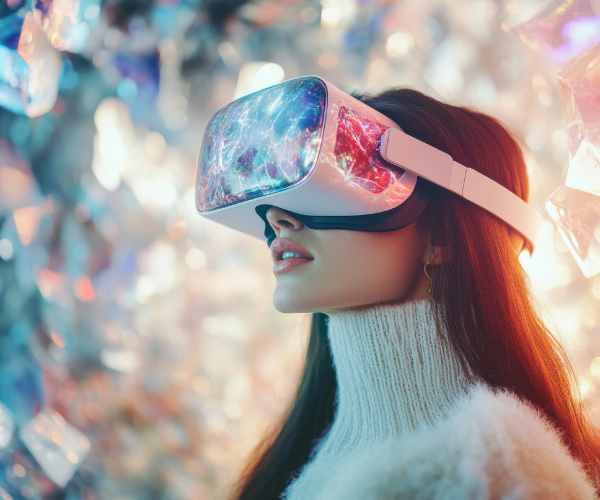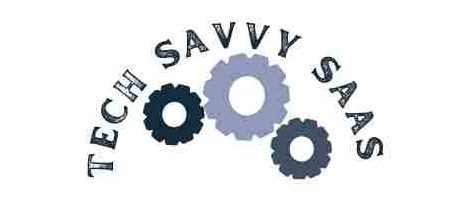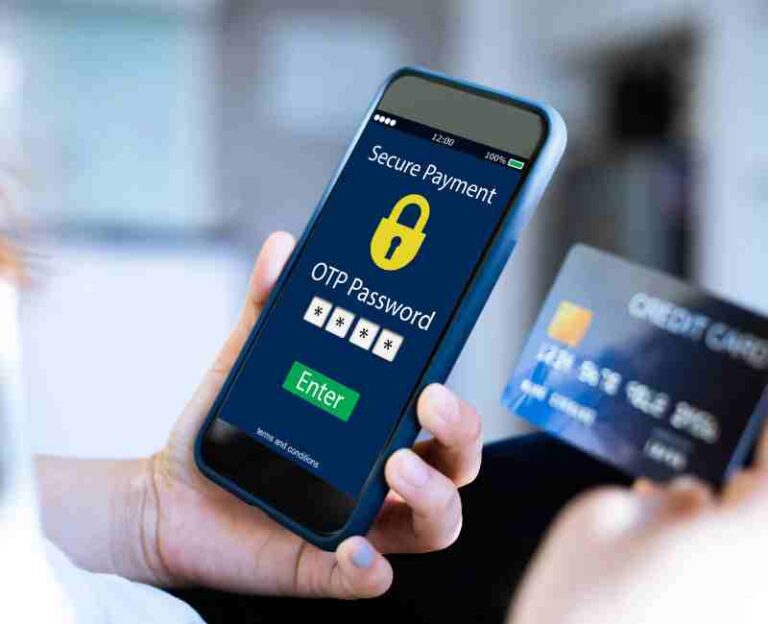In today’s dynamic educational landscape, virtual reality (VR) stands at the forefront of innovation, offering unparalleled opportunities for enhancing various facets of learning. One such area experiencing a significant transformation is language immersion programs. Traditionally, language immersion has been recognized as a powerful method for mastering a new language, offering learners the chance to fully immerse themselves in the target language’s environment. However, the integration of VR technology into these programs has opened up a new realm of possibilities, revolutionizing the way languages are taught and learned.
Language immersion holds immense importance in the realm of language learning. By surrounding learners with the target language in everyday contexts, immersion programs create an environment conducive to rapid language acquisition and proficiency development. This full-text approach to learning not only enhances vocabulary and grammar skills but also fosters cultural understanding and language skills. Consequently, educators and language experts have long sought ways to optimize immersion-based teaching methods for maximum effectiveness.
In recent years, there has been a notable surge in interest surrounding the integration of VR technology into language education. With advancements in educational technology, it has emerged as a promising tool for creating immersive and engaging learning experiences. Whether through simulated environments or interactive scenarios, VR has the potential to transport learners to virtual worlds where they can practice their language skills. real-world contexts. This intersection of VR and language immersion programs has sparked curiosity and excitement among educators, researchers, and language learners alike.

Enhanced Learning Environment
In the realm of language immersion programs, creating an environment that fully engages learners and replicates real-life language scenarios is paramount. This is where virtual reality (VR) emerges as a game-changer, offering a level of immersion that traditional teaching methods simply cannot match.
Immersion in a Virtual World
VR technology transports learners into immersive virtual environments where they can interact with lifelike scenarios and practice their language skills in context. Unlike conventional classroom settings, where learners may struggle to visualize or connect with the target language, VR creates a sense of presence that enhances the learning experience. Whether exploring a bustling market in Paris or conversing with native speakers in Tokyo, learners are fully immersed in the linguistic and cultural richness of the target language.
Real-life language scenarios
One of the most compelling aspects of VR in language immersion programs is its ability to simulate real-life language scenarios. Through interactive simulations and role-playing exercises, learners are presented with authentic situations that require them to use the target language in practical contexts. For example, a VR application might simulate a restaurant setting where learners must order food and engage in conversation with waitstaff, providing invaluable practice for real-world situations.
Examples of VR Applications
Numerous VR applications have been specifically designed to facilitate language learning and immersion. For instance, applications like “VRChat” allow users to interact with others from around the world in virtual environments, providing opportunities for language practice and cultural exchange. Similarly, language learning platforms such as “Immersive VR Education” offer immersive experiences tailored to specific languages, incorporating interactive lessons and virtual classrooms.
Overcoming language anxiety
In the realm of language learning, anxiety can be a significant barrier for many students, hindering their ability to effectively acquire and practice a new language. Particularly in traditional classroom settings, where learners may feel self-conscious or intimidated by the prospect of making mistakes in front of their peers, language anxiety can impede progress and diminish confidence. However, the integration of virtual reality (VR) technology into language immersion programs offers a promising solution to this pervasive issue.
Addressing Anxiety in Traditional Classrooms
In traditional classroom settings, language anxiety often arises from a fear of judgment or embarrassment when speaking in front of others. Students may worry about making mistakes or not being understood, leading to feelings of self-doubt and reluctance to participate actively in class activities. This anxiety can significantly hinder language learning progress and diminish overall confidence in using the target language.
VR: Creating a Safe and Supportive Learning Environment
One of the key advantages of VR in language immersion programs is its ability to provide a safe and supportive learning environment for students. Unlike traditional classrooms, where learners may feel pressure to perform perfectly in front of their peers, VR offers a private and immersive space where they can practice speaking and listening skills without fear of judgment. In a virtual environment, students have the freedom to make mistakes, experiment with language, and learn from their experiences without the fear of negative consequences.
Research Findings and Case Studies
Numerous studies have explored the effectiveness of VR in reducing language anxiety and promoting language learning confidence. For example, a study published in the Journal of Educational Technology & Society found that students who used VR-based language learning platforms reported lower levels of anxiety and greater confidence in speaking skills compared to those in traditional classroom settings. Similarly, a case study conducted by researchers at a leading language institute demonstrated that learners who participated in VR-based language immersion programs showed significant improvements in speaking fluency and confidence over time.
Increased engagement and motivation
In the realm of language education, maintaining engagement and motivation among students is essential for effective learning outcomes. Traditional teaching methods often struggle to capture learners’ attention and sustain their interest over time. However, the integration of virtual reality (VR) technology into language immersion programs offers a powerful solution to this challenge, providing immersive and interactive experiences that engage students on a whole new level.
Captivating Students’ Attention with VR
One of the most striking features of VR technology is its ability to captivate students’ attention and transport them to virtual worlds where learning becomes an adventure. Unlike traditional classroom settings, where lectures and textbooks may fail to fully engage students, VR offers a sensory-rich experience that stimulates curiosity and exploration. Whether exploring ancient ruins in a virtual archaeological dig or embarking on a virtual journey through a foreign city, students are drawn into the learning process in ways that traditional methods cannot replicate.
The Role of Interactive VR Experiences
Interactive VR experiences play a pivotal role in keeping learners engaged and motivated throughout their language-learning journey. By allowing students to actively participate in their learning and manipulate virtual objects in real-time, VR fosters a sense of agency and ownership over the learning process. Whether solving puzzles, completing challenges, or collaborating with peers in virtual environments, students are actively engaged in their learning, leading to deeper understanding and retention of language concepts.
Examples of Gamified Language Learning in VR
Gamification has emerged as a popular strategy for enhancing engagement and motivation in language learning, and VR provides an ideal platform for implementing gamified experiences. For example, language learning applications such as “VR Language Lab” offer gamified activities where students earn points, unlock achievements, and compete with classmates to master language skills. Similarly, virtual reality games like “LinguaSphere” combine immersive storytelling with language challenges, providing an entertaining and effective way for students to practice vocabulary, grammar, and conversation skills.
Personalized Learning Experience
In the realm of language education, the concept of personalized learning has gained traction as educators recognize the importance of catering to the unique needs and preferences of each student. Traditional classroom settings often present challenges in delivering personalized instruction to a diverse group of learners. However, the integration of virtual reality (VR) technology into language immersion programs offers a promising solution to this dilemma, providing a platform for delivering tailored learning experiences that cater to individual learners.
Individualized learning with VR
VR technology enables educators to create personalized learning experiences that adapt to the needs and abilities of each student. Unlike traditional classroom settings, where instruction is typically delivered in a one-size-fits-all manner, VR allows learners to progress through lessons at their own pace and focus on areas where they need additional support. Whether practicing pronunciation, building vocabulary, or honing conversation skills, students can tailor their learning experience to suit their individual goals and preferences.
Adapting to Proficiency Levels and Learning Styles
One of the key advantages of VR in language education is its ability to adapt to learners’ proficiency levels and learning styles. Through intelligent algorithms and adaptive learning systems, VR programs can assess students’ language abilities and dynamically adjust the difficulty of tasks and activities accordingly. For example, a VR language learning platform may provide scaffolded support for beginners while challenging more advanced learners with complex language tasks. Additionally, VR can accommodate different learning styles, whether visual, auditory, or kinesthetic, by offering a variety of interactive learning experiences.
Studies and Examples of Effectiveness
Numerous studies have demonstrated the effectiveness of personalized VR language learning programs in improving language proficiency and learner engagement. For instance, a study published in the British Journal of Educational Technology found that students who used a personalized VR language learning platform showed significant gains in vocabulary acquisition and speaking fluency compared to those in traditional classroom settings. Similarly, case studies conducted by leading language institutes have highlighted the positive impact of personalized VR programs on learners’ motivation and confidence in using the target language.
Real-world language practice
In the journey of language acquisition, the ability to engage in real-world language practice is indispensable for learners to develop fluency and proficiency. Traditional language learning methods often fall short of providing authentic opportunities for learners to apply their language skills in meaningful contexts. However, the integration of virtual reality (VR) technology into language immersion programs offers a compelling solution to this challenge, offering learners immersive and interactive experiences that closely mirror real-life language situations.
Authentic language practice with VR
One of the most significant advantages of VR in language education is its ability to provide authentic language practice in a controlled and supportive environment. Unlike traditional classroom settings, where opportunities for real-world language interaction may be limited, VR allows learners to immerse themselves in simulated environments where they can engage in authentic conversations and interactions with virtual characters. Whether ordering food in a restaurant, negotiating a business deal, or conversing with native speakers in everyday scenarios, VR offers learners a safe space to practice and refine their language skills.
Replicating real-world language situations
VR simulations are designed to closely replicate real-world language situations, providing learners with opportunities to apply their language skills in context. Through interactive scenarios and role-playing exercises, learners are presented with authentic challenges and scenarios that require them to use the target language to communicate effectively. For example, a VR simulation may immerse learners in a bustling marketplace where they must negotiate prices and engage in conversations with vendors, providing valuable practice for real-world travel or business situations.
Examples of VR Scenarios for Language Practice
Numerous VR scenarios have been developed to provide learners with opportunities to practice language skills in different contexts. For instance, language learning applications such as “VR Language Exchange” offer virtual environments where learners can engage in conversations with native speakers from around the world, providing invaluable practice for speaking and listening skills. Similarly, VR language learning platforms like “Language World VR” offer immersive experiences tailored to specific languages and cultural contexts, allowing learners to explore and interact with virtual environments while practicing their language skills.
Access to Diverse Language Environments
In the pursuit of language mastery, exposure to diverse language environments is invaluable for learners to develop a nuanced understanding of the target language and its cultural nuances. However, traditional language education methods often struggle to provide learners with authentic experiences in diverse linguistic and cultural contexts. Enter virtual reality (VR) technology, which offers a revolutionary solution by transporting learners to various language environments without ever leaving the classroom.
Transporting Learners to Various Language Environments
One of the most compelling aspects of VR in language education is its ability to transcend physical boundaries and transport learners to diverse language environments around the world. Through immersive simulations and virtual experiences, learners can explore bustling city streets, tranquil rural villages, or vibrant cultural festivals, all while practicing their language skills in context. Whether navigating the winding alleyways of a foreign city or conversing with locals in everyday situations, VR offers learners a window into the rich tapestry of linguistic and cultural diversity.
Benefits of Exposing Learners to Different Cultural Contexts and Dialects
Exposure to diverse cultural contexts and dialects is essential for learners to develop cultural competency and linguistic versatility. VR technology facilitates this exposure by allowing learners to interact with virtual environments that reflect the cultural nuances and linguistic diversity of the target language. By engaging with native speakers, exploring cultural landmarks, and participating in local customs and traditions, learners gain insights into the rich tapestry of human experience and develop a deeper appreciation for the complexities of language and culture.
Examples of VR Programs Offering Immersion in Multiple Languages and Cultures
Numerous VR programs have been developed to offer immersion in multiple languages and cultures, providing learners with opportunities to explore the linguistic and cultural diversity of the world. For example, applications like “VR Language Explorer” offer virtual tours of different countries and regions, allowing learners to practice their language skills while exploring iconic landmarks and cultural attractions. Similarly, language learning platforms such as “Cultural Connections VR” offer immersive experiences that expose learners to diverse cultural contexts and dialects, fostering cultural awareness and language proficiency.
FAQs
What equipment do I need for VR language learning?
Virtual reality (VR) language learning offers an immersive and engaging approach to mastering a new language. To embark on this journey, you’ll need the right equipment to access VR language learning programs effectively.
Basic Requirements:
- VR Headset: The cornerstone of VR language learning, a VR headset allows you to enter immersive virtual environments where you can practice your language skills. Popular VR headsets include the Oculus Quest, HTC Vive, and PlayStation VR.
- Compatible Device: Most VR headsets require a compatible device, such as a gaming PC or a smartphone, to run VR applications smoothly. Ensure that your device meets the minimum system requirements for VR compatibility.
- Controllers: Many VR language learning programs utilize handheld controllers to interact with virtual environments and complete language exercises. These controllers allow for intuitive gestures and movements, enhancing the immersive experience.
Compatible VR headsets and software platforms:
- Oculus Quest is a standalone VR headset that offers a wireless and user-friendly VR experience. The Oculus Quest is compatible with a wide range of VR language learning applications available on the Oculus Store.
- HTC Vive: A high-end VR headset known for its immersive visuals and precise tracking. The HTC Vive is compatible with various VR language learning programs available on SteamVR and other platforms.
- Google Cardboard: An affordable VR solution that utilizes your smartphone as a VR display. Google Cardboard is compatible with a variety of VR language learning apps available on the Google Play Store and other app stores.
Is VR language learning suitable for all proficiency levels?
Virtual reality (VR) language learning is highly adaptable and can accommodate learners of all proficiency levels, from beginners to advanced learners.
Adaptability to Proficiency Levels:
- Beginners: VR language learning programs offer introductory lessons and exercises designed to familiarize beginners with the basics of the target language. These programs often include interactive tutorials, vocabulary drills, and pronunciation exercises to help beginners build a solid foundation in the language.
- Advanced Learners: For advanced learners, VR language learning programs offer more challenging exercises and immersive experiences tailored to their proficiency level. Advanced learners can engage in complex conversations, explore authentic language environments, and fine-tune their language skills through targeted practice exercises.
Are there any drawbacks to using VR in language immersion programs?
While virtual reality (VR) technology offers numerous benefits for language immersion programs, there are some potential drawbacks and challenges to consider.
Addressing Drawbacks:
- Motion Sickness: Some users may experience motion sickness or discomfort when using VR headsets, especially during immersive experiences with rapid movements or changes in perspective. To mitigate this issue, take frequent breaks, start with shorter VR sessions, and gradually increase exposure over time.
- Technical Glitches: VR technology is still evolving, and users may encounter technical glitches or compatibility issues when using VR language learning programs. To address these challenges, ensure that your VR headset and software are up-to-date, troubleshoot any technical issues promptly, and seek assistance from technical support resources when needed.
- Limited Interactivity: While VR language learning programs offer immersive experiences, they may not fully replicate the complexity and richness of real-world language interactions. To supplement VR learning, engage in additional language practice through conversation partners, language exchanges, and real-world immersion experiences.
Conclusion
In conclusion, the integration of virtual reality (VR) technology into language immersion programs offers a host of benefits that have the potential to revolutionize language education. By providing learners with immersive and interactive experiences, VR transcends the limitations of traditional teaching methods and opens up new avenues for language acquisition and proficiency development.
- Enhanced Learning Environment: VR creates highly immersive environments that simulate real-life language scenarios, providing learners with authentic and engaging language practice opportunities.
- Overcoming Language Anxiety: VR offers a safe and supportive learning environment where learners can practice their language skills without fear of judgment, helping to reduce language anxiety and build confidence.
- Increased Engagement and Motivation: Through interactive experiences and gamified activities, VR captivates learners’ attention and maintains their motivation, leading to more effective and enjoyable language learning experiences.
- Personalized Learning Experience: VR allows for individualized instruction that adapts to learners’ proficiency levels and learning styles, enabling educators to tailor instruction to meet the unique needs of each student.
- Real-World Language Practice: VR provides learners with access to diverse language environments and cultural contexts, allowing them to engage in authentic language practice and develop cultural competency.
The potential of VR technology to revolutionize language education cannot be overstated. By harnessing the power of immersive technology, educators can create dynamic and engaging learning experiences that inspire learners to become active participants in their language learning journey. From overcoming language barriers to fostering cultural understanding, VR can transform the way languages are taught and learned.
As we look to the future of language education, educators and learners alike need to explore the opportunities offered by VR technology. By embracing innovation and incorporating VR into language immersion programs, we can unlock new possibilities for language acquisition and proficiency development. Whether through immersive simulations, interactive experiences, or virtual language exchanges, VR holds the key to unlocking the full potential of language learning in the digital age.
In conclusion, the integration of virtual reality into language immersion programs represents a paradigm shift in language education, offering a transformative approach that empowers learners to achieve their language learning goals. As we continue to harness the power of VR technology, let us embrace the opportunities it offers and embark on a journey of exploration and discovery in the world of language learning.
More Post
- Cybersecurity for Online Learning Platforms: Ensuring Student Privacy
- How to Adaptive Learning Platforms: Tailoring Education to Individual Progress
- Social Learning Platforms: Creating Online Learning Communities
- How do implement 1:1 device programs in schools?
- Can We Unravel the Secrets of the Dark Web? Understanding Cybercrime Hideouts and Their Impact






